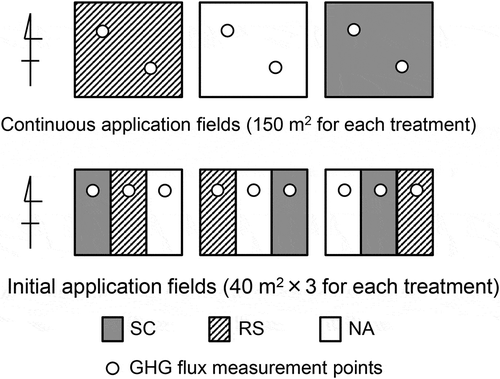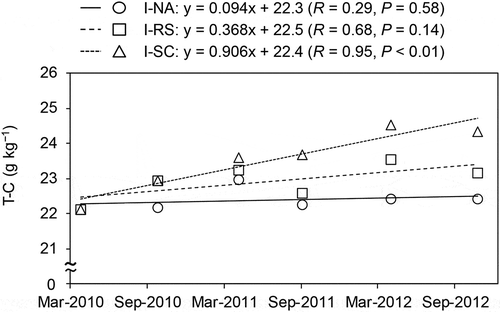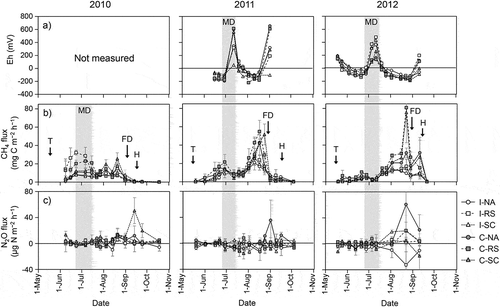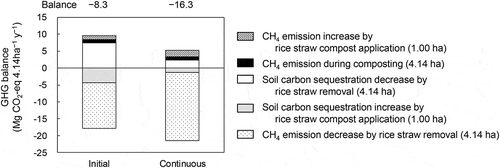Figures & data
Table 1. Main soil physicochemical properties of the studied fields (0–15 cm, April 2010).
Table 2. Monthly air temperature and precipitation during the rice growing seasons.
Table 3. Date of cultivation management.
Table 4. Physicochemical properties of rice straw and rice straw compost and estimated yield of rice straw compost production (3-year average).
Figure 1. Layout of the study fields. NA, no application; RS, rice straw, and SC, rice straw compost.

Table 5. Soil carbon (C) sequestration rate in the initial application field.
Table 6. Soil carbon (C) sequestration rate in the continuous application field.
Figure 2. Changes in the total carbon (T-C) content of the surface soil in the initial application field.

Table 7. Averaged grain yield over three years.
Figure 3. Seasonal variations in the soil Eh at the 5 cm depth (a), CH4 flux (b) and N2O (c). Bars for the CH4 and N2O fluxes indicate standard errors. C, continuous application; I, initial application; NA, no application; RS, rice straw; SC, rice straw compost. FD, final drainage; H, harvesting; MD, mid-season drainage; T, transplanting.

Table 8. Cumulative methane (CH4) and nitrous oxide (N2O) emissions for three years.
Table 9. Changes in net greenhouse gas (GHG) balance due to the application of organic matter.
Figure 4. Effects of rice straw removal and compost application on net greenhouse gas balance (CO2 equivalent) evaluated by taking compost production into consideration. Positive values indicate net emissions to the atmosphere, and negative values indicate net uptake from the atmosphere. To produce 15 Mg of rice straw compost applied to 1 ha of paddy field, 24.83 Mg of rice straw was estimated to be collected from 4.14 ha (calculated from the by assuming negligible SiO2 loss during the composting process with the rice straw application rate of 6.0 Mg ha−1). Changes in CH4 and the soil carbon due to the rice straw removal (4.14 ha) and rice straw compost application (1.00 ha) were estimated from . CH4 emissions during composting were calculated using a factor estimated by Miura (Citation2003). N2O emissions during compositing were excluded from the evaluation because it was not observed with no nitrogen addition (Miura Citation2003). Changes in N2O emissions by the organic matter application were excluded from the evaluation because the values were very small.

